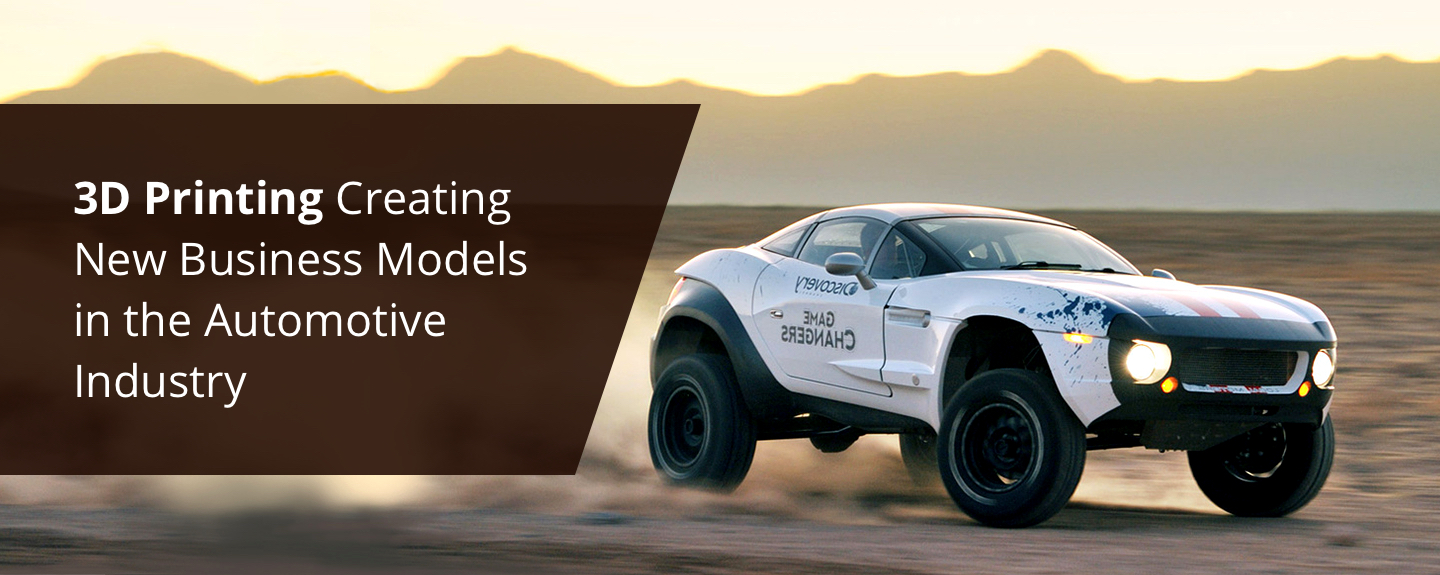3D Printing Creating New Business Models in the Automotive Industry

Electric vehicles are now more affordable than ever before. It is all thanks to large format 3D printing. In the automotive industry, 3D printing today is creating new business models. When compared to the traditional diesel or petrol cars, there are a whole lot of benefits associated with using electric cars. These cars contribute to the environmental footprint and they are hundred percent eco-friendly. As these cars run on clean energy sources, they do not emit any toxic smoke or gas in the environment. It is said that electric cars are even better than the hybrid cars as these hybrid cars run on gas produced emissions. Electronic vehicles offer more than just individual benefits, they contribute a lot to the environment when you compare them to our traditional vehicles.
3D printing is helping engineers speed up the development and design of these electrical vehicles. Though many of these vehicles might still not be available at your local car dealership, they are heading their way and becoming more popular with every passing day. 3D printing reduces manufacturing costs and at the same time speeds up the design and manufacturing process. Large scale 3D printed electrical vehicles are different from our conventional cars because they do not require the massive resources to be produced and this in turn gives a lot of creative authority to the entrepreneurs.
Though the 3D printing technology might still not be popular in different industry verticals, the most important thing needed to make not just electrical cars but all 3D printing vehicles a success is awareness. The abilities of this technology in bringing down manufacturing costs and boosting productivity in the electric vehicles market indicates that mass production might be just round the corner, especially in the Indian markets.
While we are trying every bit in contributing towards a more sustainable future, we need to make use of the resources available to us in a positive way. While electric cars are still about to completely replace the conventional vehicles in India, we cannot overlook the efficient construction process that these cars have. It takes less than a year to manufacture these and, in some instances, it takes even as less as three months completely to manufacture these cars. When it comes to comparing the parts of an electrical car with that of an Internal Combustion Engine (ICE) vehicle, it goes without saying that electric car is lighter in weight and has a greater number of secondary vibrations. The technology of 3D printing will enable mass customization and faster manufacturing possible in a much a quicker time.
Advantages
As we discuss on the impact and possibilities on the 3D printing technology in automobile industry, let us look at the advantages of using this technology in manufacturing electric cars:
- Design and conceptualization: the end product of 3D printing technology is always highly detailed and accurate to the micro levels. Smooth scale models that are generally printed with the help of 3D printing technology is often used to highlight the design ideas. These models also come to help where CAD models are not enough for detecting the design issues.
- Personalization: there is no limitation to the range of personalised touch that you can plan for your 3D printed electric car. Whether you need a particular texture for your dashboard or are looking for a completely personalized exterior, all of it is possible with the help of 3D printing technology.
- Rapid prototyping: Changes can be made with the click of a button and new designs and concepts can be tried out quickly. As this is not possible in 3D manufacturing, 3D printing saves a lot of time, effort and costs here.
- Low capital investment: when we look at it for a prolonged period of time, 3D printing technology is definitely cost effective and at the same time, requires less infrastructure when it comes to setting up costs for traditional manufacturing.
- Low operation costs: With 3D printing, you are able to use digital libraries. Parts can now be printed as and when they are required which facilitates shorter assembly times and increases the chance of on-time delivery.
Most often, the sweet spot for 3D printing is in the high value and low volume as it reduces the lead times that lowers the tooling and set up costs that are associated with traditional manufacturing. The mobility revolution has changed the entire face of the automobile industry. The current means of transport are required to match the rapidly changing preferences of the buyers. The world today is moving too fast to maintain the concepts of traditional manufacturing. Therefore, companies that are successfully using 3D printing in their manufacturing process are surely securing a competitive edge over others.


